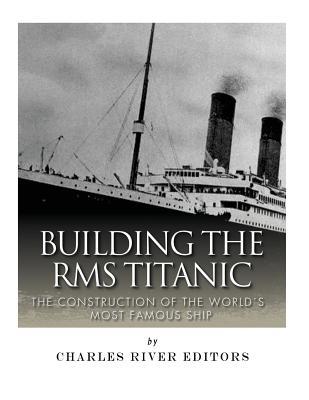*Includes accounts written by some of the workers
*Describes the design and construction of the ship, including its safety features, exterior, and first class amenities
*Includes a bibliography for further reading
"I cannot imagine any condition which would cause a ship to founder. I cannot conceive of any vital disaster happening to this vessel." - Captain Edward J. Smith
"The appearance of safety was mistaken for safety itself." - Walter Lord, author of A Night to Remember
Just before midnight on April 14, 1912, the RMS Titanic, the largest ship in the world, hit an iceberg, starting a chain of events that would ultimately make it history's most famous, and notorious, ship. In the over 100 years since it sank on its maiden voyage, the Titanic has been the subject of endless fascination, as evidenced by the efforts to find its final resting spot, the museums full of its objects, and the countless books, documentaries, and movies made about the doomed ocean liner.
The Titanic was neither the first nor last big ship to sink, so it's clear that much of its appeal stems from the nature of ship itself. Indeed, the Titanic stands out not just for its end but for its beginning, specifically the fact that it was the most luxurious passenger ship ever built at the time. In addition to the time it took to come up with the design, the giant ship took a full three years to build, and no effort or cost was spared to outfit the Titanic in the most lavish ways. Given that the Titanic was over 100 feet tall, nearly 900 feet long, and over 90 feet wide, it's obvious that those who built her and provided all of its famous amenities had plenty of work to do. The massive ship was carrying thousands of passengers and crew members, each with their own experiences on board, and the various amenities offered among the different classes of passengers ensured that life on some decks of the ship was quite different than life on others.
Thanks to the dramatization of the Titanic's sinking and the undying interest in the story, millions of people are familiar with various aspects of the ship's demise, and the nearly 1,500 people who died in the North Atlantic in the early morning hours of April 15, 1912. The sinking of the ship is still nearly as controversial now as it was over 100 years ago, and the drama is just as compelling. However, while the sinking of the Titanic will always be a compelling story, the construction of the Titanic is often overlooked, despite being an amazing story itself, and one that combined both comfort and raw power with the world's foremost technological advances. Building the RMS Titanic examines the history behind the origins of the ship, the construction of the boat, and a look at the rooms and amenities it held. Along with pictures of important people, places, and events, you will learn about the construction of the Titanic like never before, in no time at all.
